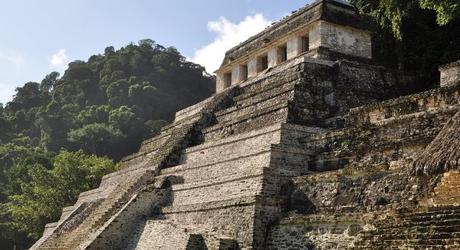Mexican architecture is extremely diverse and each style tells a vivid story of the country’s past. As well as elegant colonial-era structures in the bustling cities and towns, you’ll spot remarkably preserved ruins in more rural areas that date back to pre-Columbian Mesoamerica.
Much of current Mexican architecture stems from its Hispanic history and is similar to what you might find in many of Spain’s older cities. Admire elegant candy-colored colonial houses set along cobbled streets in hilly Guanajuato or take a trip to San Cristóbal de las Casas in southerly Chiapas to view its bright yellow cathedral and ornately decorated Temple of Santo Domingo.
You’ll find magnificent Maya period ruins in Mérida as well as colonial churches and beautiful Beaux Arts buildings.
For architecture that’s a little older, Palenque’s jungles are home to crumbling early Maya temples dating back to 226 BC. In the state of Yucatán, make some time to explore Chichen Itza, an archaeological site that was once the largest Maya settlements between 600-900 AD. Key ruins include the El Castillo – a step pyramid made of limestone – and the impressive Great Ball Court that’s the largest still-standing ancient ballcourt in Mesoamerica.
Elsewhere, you’ll find magnificent Maya period ruins in Mérida as well as colonial churches and beautiful Beaux Arts buildings if you amble down the city’s Pasejo Montejo. Later indigenous architecture in Mexico includes the temples of the Aztecs that are recognizable for their tiered structures and symbolic ornamentation. Teotihuacan just outside Mexico City is the most famed Aztec dig, but you’ll discover lesser-known, but just as picturesque ruins in the nearby archaeological zone of Acatitlan.
If you’re keen to explore the former settlements of other Mexican indigenous cultures too, go off the beaten track to Monte Alban, just outside Oaxaca. Dating back to the 8th century BCE, this pre-Columbian center of Zapotec and Mixtec culture, offer plazas, pyramids, elaborate underground passages and nearly 170 tombs for you to explore!






Architecture in Mexico City
Mexico City is home to a melting pot of different architectural influences, from Aztec era ruins in the historic center – known locally as the centro histórico – to wide boulevards designed in the French style during the 1800s.

Take a tour of the capital’s Metropolitan Cathedral, a key colonial landmark that merges many different architectural styles – from Gothic to Baroque – as it was built gradually over a period of 250 years. It sits atop the site of the Aztec Templo Mayor and was actually constructed from stone pilfered from the ancient temple.
Examples of cutting-edge contemporary Mexican architecture can also be seen in the city, from the 1960’s National Museum of Anthropology with its iconic concrete umbrella courtyard to the space-age Museo Soumaya that’s adorned with thousands of metallic hexagonal tiles.
See Mexico’s most mesmerizing structures from across the centuries with a customized, private tour with us.
